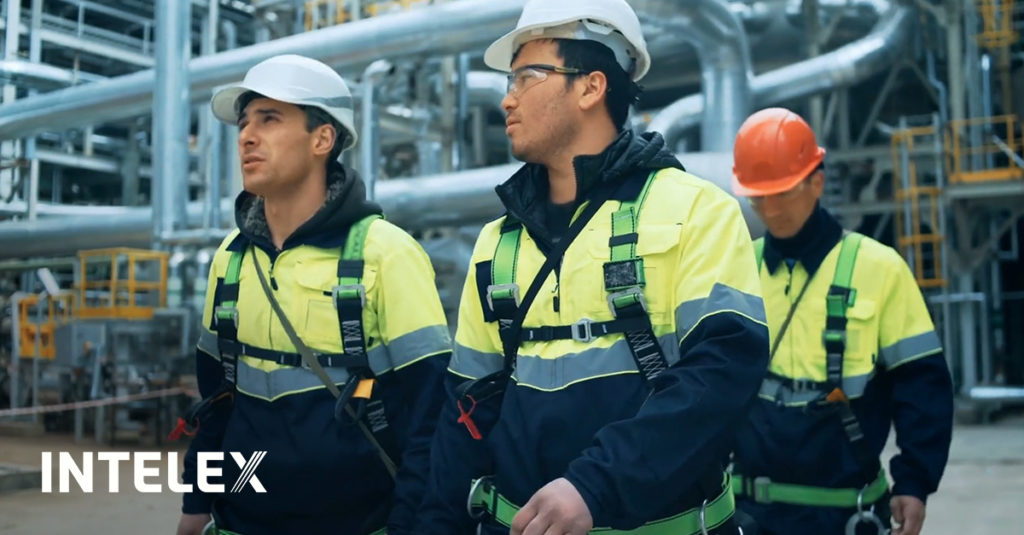Intelex Technologies: Learning from the Past, Understanding the Present and Evolving to Meet the Future
March 22, 2022

As your needs have evolved – from managing paper spreadsheets to managing terabytes of ESG, EHS and Quality data that log everything from near misses to product defects to greenhouse gases – Intelex has evolved our technology and software to help you meet your challenges.
“Learn from yesterday, live for today, hope for tomorrow. The important thing is not to stop questioning.” – Albert Einstein
With 30 years of EHSQ experience, Intelex knows a thing or two about how health and safety, quality, environment and sustainability, ESG and risk management can preserve lives, protect the planet and sustain your business in tough times. Our founder story starts in Bhopal in 1984, with one of the greatest industrial disasters of all time. Forty years later, in 2022, the world is recovering from what is arguably one of the greatest worldwide tragedies in modern times: the global COVID-19 pandemic.
“We can’t manage what we don’t measure, and for 30 years, Intelex has been helping companies collect and analyze the data that helps them protect employees and the environment,” said Intelex President Melissa Hammerle. “As workplace deaths have steadily decreased and the practice of EHSQ has evolved and ESG has become more important to shareholders, Intelex remains a leader in supporting the management systems of companies around the world. While zero workplace deaths by 2050 is an ambitious goal, it is within sight and everyone at Intelex is proud to play a small part in reaching that goal.”
At Intelex, we understand how important it is for you and your organization to strive for continuous improvement by fostering a business culture that makes the workplace safer, drives productivity, protects the environment and supports operational excellence. As your needs have evolved – from managing paper spreadsheets to managing terabytes of EHSQ data that log everything from near misses to product defects to greenhouse gases – Intelex has evolved our technology and software to help you meet your challenges.
In the Beginning: The Intelex Founder Story
Imagine that you’re sleeping and in the middle of the night, a cloud of noxious gas silently floats across fields and highways, over roofs and into your open windows. You wake up gasping – perhaps for the last time – trying to take a breath.
That’s exactly what happened to hundreds of thousands of people in December 1984, when a methyl isocyanate (MIC) gas leak at the Union Carbide India Limited (UCIL) pesticide plant in Bhopal, Madhya Pradesh, India exposed more than half a million people to the toxic gas. Thousands were killed – an estimated 2,259 immediately upon exposure – with many more dying in the following days. There was even a Netflix show about it.
From that tragedy, the company we now know as Intelex Technologies was born. As we celebrate the 30th anniversary of our founding on Feb. 15, 1992, I thought I’d use this opportunity to share a little bit of our history and talk about the role Intelex has played over the years in developing some of the technology that ensures the safety of both employees and the planet.
From Tragedy to New EHS Technology
A couple of years after the Bhopal disaster, the industrial gases division of Union Carbide (then called Linde) recognized that the paper-based EHS management system they developed after the tragedy was insufficient to handle the increasing complexity of their operations. Linde approached Intelex co-founder Ted Grunau to build a DOS-based system to help manage the volume and complexity of EHS information that they generated.
Shortly after, Grunau and partner Andy Jaine were granted the right to re-sell the technology to other companies. And the rest, as they say, is history.
Intelex Technologies was founded in 1992 and there were two pivotal moments in our history that powered our growth by ensuring companies could fully leverage our Safety Management System: moving to a cloud-based system in 2000 and the development of a technology called iForms (now called Application Builder) in 2005. Finally, companies could easily access their data from locations anywhere in the world using an Internet connection. The software was flexible enough to allow them to configure it to map to existing processes in their organizations and to grow their Safety Management Systems and Quality Management Systems as their businesses evolved and grew.
Zero Workplace Deaths by 2050
Data from the U.S. National Institute for Occupational Safety and Health indicates that occupational fatalities in the United States for the period between 1980 and 1984 averaged around 8.8 per 100,000 full-time equivalent (FTE) workers. The most recent statistics from the U.S. Bureau of Labor Statistics reported 3.4 fatalities per 100,000 full-time equivalent (FTE) workers in 2020. In 50 years, the fatality rate per 100,000 full-time equivalent (FTE) workers has declined by 64 percent.
Intelex cannot take credit for that decline in workplace fatalities, but it shows how occupational health and safety has matured in the past 50 years and the likely role technology has played in the evolution of safety equipment, processes and management systems. Is it any surprise, then, that our mission has evolved to “eliminating death on the job by 2050?”
Take an EHS Journey with Us
The future of EHSQ: What will it look like? We know data and technology not only will play a role, but will help redefine the landscape, making an aspirational goal like zero workplace deaths by 2050 achievable. More data is available than ever before to health and safety, quality and ESG professionals. Intelex helps 1,400 companies and millions of users around the globe analyze and utilize this critical operational information to provide safer, cleaner and more efficient products and processes – for our customers, employees and communities.
The first step to understanding the data you collect is realizing that it’s more than numbers. Every data point represents a behavior or decision made by someone at your organization. Every workplace injury or illness is more than a number on your OSHA log or RIDDOR report. It occurs to an employee; to a person you’ve nodded to in a hallway, had lunch with, laughed with. Employees are the foundation of our businesses and our stakeholders.
“The goal of the video was to illustrate that regardless of how technology has evolved over time and changed how EHSQ professionals operate, people and their behaviors are still the source of all this data that has been generated,” says Intelex Creative Manager Mike Thompson, who created the video (and provided the voiceover). “What we want people to take away, especially in this era of ESG, is how Intelex can help organizations turn this information into positive action; economically, socially and environmentally.”
According to CloudTweaks, estimates suggest that at least 2.5 quintillion bytes of data is produced every day (that’s 2.5 followed by 18 zeros), but that includes data collected everywhere from NASA’s monitoring of outer space to your daughter’s Instagram photos. The average company manages 162.9 terabytes of data, depending on company size (that’s still 1629 followed by 10 zeros).
Intelex can help you translate all the data you collect into actionable business intelligence that you can use to continuously improve and evolve your programs, processes and culture, protecting your business now and well into the future.







